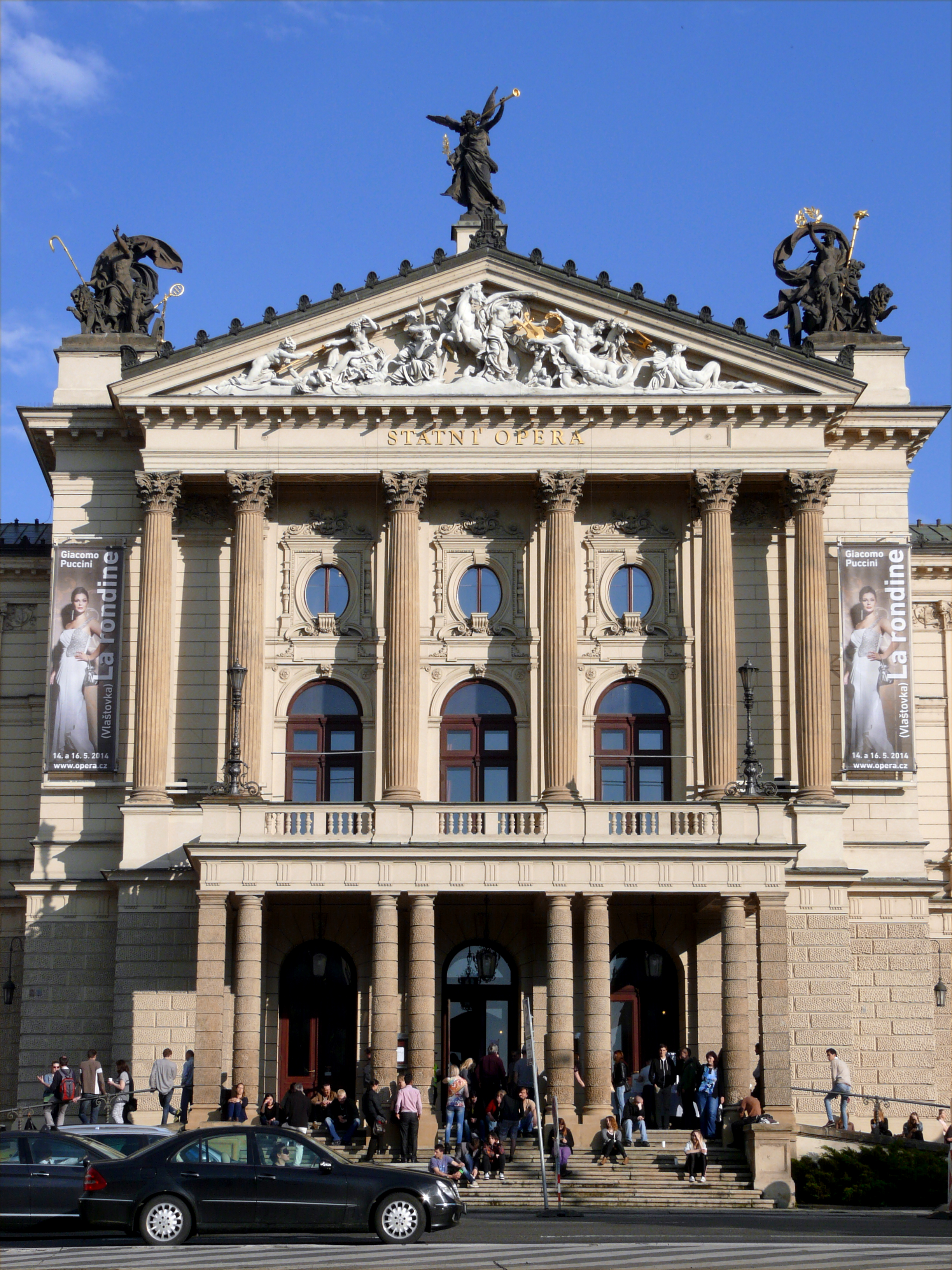Wilsonova 101/4: State Opera
In the early nineteenth century, Prague was home to a substantial number of German speakers, especially among the nobility and professional classes. In the light of the Czech National Revival, however, their linguistic and cultural dominance came under threat; and in 1883, the year of the re-opening of Prague’s National Theatre, a petition was started for a rival German-speaking opera house. On 5 January 1888 the new theatre was opened with a performance of Wagner’s appropriately nationalistic Die Meistersinger von Nürnberg.
The building was designed by the Viennese architects Ferdinand Fellner and Hermann Helmer, whose firm was responsible for many of the grandest public concert-halls of the Austro-Hungarian Empire. A superb example of neo-classicism, the theatre’s facade is dominated by an ornate tympanum by the sculptor Theodor Friedl. Its frieze depicts the legend of Orpheus, whose golden lyre was capable of charming all things in nature, living or dead.
The three elliptical windows in the upper storey are post-war. Originally they were recesses which housed the busts of Schiller, Goethe and Mozart. These were removed – along with a host of other cultural references to Germany in Prague – after the defeat of the Nazis. The building is now the State Opera and part of the Czech National Theatre.








